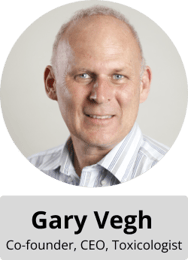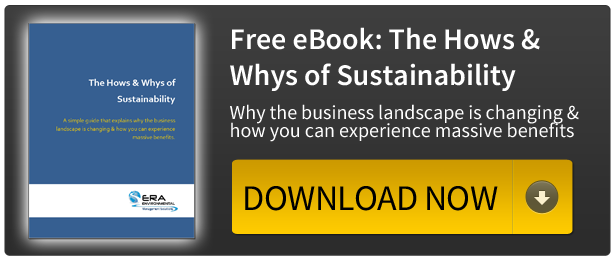.webp?width=350&name=file-21314862%20(1).webp) This article is part of ERA’s three part series, Sustainability: Going Beyond Compliance. Part two outlines the nine guiding principles for sustainable manufacturing.
This article is part of ERA’s three part series, Sustainability: Going Beyond Compliance. Part two outlines the nine guiding principles for sustainable manufacturing.The best way to start making your business sustainable is to create a sustainability plan unique to your organization.
A sustainability plan is the tool used to take concrete actions to achieve your goal. You may decide to focus on reducing your environmental impact and start measuring your air, water, and waste emissions.
Maybe the most important part of your sustainability is how much energy you consume and begin to chart and reduce how much energy you purchase.
Whatever you decide, you’ll need to start by developing your own unique sustainability plan.
Nine Principles for Building Your Plan
The Canadian National Round Table on the Environment and Economy (NRTEE) was tasked with coming up with real-world solutions for the development of a national sustainability plan. What they came up with is a comprehensive list of objectives and goals that should be present in a fully-realized sustainability plan.
1. Stewardship
The heart of any sustainability plan is to ensure there will always be enough resources for the future generations to be successful. A great manager is always laying the groundwork for the business to be successful, even after they’ve retired. Every aspect of your sustainability plan should support your long-term success (no quick fixes here!).
2. Shared Responsibility
Sustainability efforts aren’t just the job of your environmental manager. They are the responsibility of every single employee at your facility. Every department needs to be included in your sustainability planning. In fact, most recognized environmental programs, like ISO 14001, insist on having “environmental champions” from every level of your business.
3. Prevention
Often, the biggest environmental impacts are the result of accidents. Spills, leaks, and broken equipment have the potential to do enormous harm to the environment, even if your everyday processes generate little waste or emissions. Your sustainability plan should include actions specifically targeted at mitigating these risks. It can be simple too: routine tune-ups, inspections, and training refresher courses are sometimes all it takes.
4. Energy & Resource Management
The biggest parts of your plan should be dedicated to energy and resource management. After all, these are the elements of your manufacturing process that you are most dependent on and can get depleted. The key here is to think reduction: less energy usage and fewer materials used means financial savings and lower emissions. This can mean switching to renewable energy, or finding a paint that requires fewer coats.
5. Conservation
This means maintaining the environment affected by your business, making sure you do no harm to it and keep it in as natural a state as possible. This category is all about respecting the needs of your community, like clean drinking water and safe air. Because, ultimately, offsets can’t undo the potential harm your actions can have on others.
6. Waste Management
Almost every manufacturing process produces waste. The key to sustainability isn’t to get rid of all your waste; it’s to manage your waste in a sustainable way. Can you recycle? Use waste for a secondary process? Are you using control technology to reduce your emissions? One great example of sustainable waste management is Volkswagen’s “Pallet Project” which takes used shipping pallets and donates them to community building projects.
7. Rehabilitation & Reclamation
If your manufacturing process does have a negative effect on the environment, either through routine emissions or from extraordinary circumstances, your sustainability plan should include actions to help undo that damage. Many businesses like to support tree planting programs as a way to offset Greenhouse Gas emissions (GHG), or volunteer time at highway cleanups if their packaging isn’t 100% recyclable.
8. Scientific & technological Innovation
Innovation is the best way to get more sustainable, but also one of the slowest. Technology has allowed car manufacturers to develop cleaner engines, but the process took years and significant investments. If your business has the time and money to invest in the research and development of sustainable technology, it could net you big profits, new products, and great environmental performance. But innovation could be making sure your facility installs the most advanced control technologies and the most effective equipment.
9. International Responsibility
The manufacturing industry has moved away from the cottage industry model and on to a global scale. That means your supply chain could be far reaching and you might be shipping your products internationally. When you create your sustainability plan, it will need to focus on the area beyond your own front door and take into account where you get your resources and what environmental impact you could be having on foreign ecosystems.
Want to learn how you can put these principles to work for your business? The next section in our series will deal with the concrete ways you can put these ideas to work in your sustainability planning.
Continue mastering sustainability by reading part 3 in ERA’s Going Beyond Compliance series: Your Sustainability Plan in Action.
Image credit: Knight725
This blog was co-authored by:


Tags:
Sustainability
February 25, 2013

Comments